Fresh produce can be costly. Unfortunately, most of us lack the space for a full-fledged garden.
Instead, we must rely on local grocery stores to supply fresh fruits and vegetables. Thankfully there are options, even if you live in an apartment.
If you crave fresh produce, look no further than mason jars. Mason jars, those versatile glass containers typically used for canning, can double as mini gardens for various edible delights.
You can grow healthy and delicious foods in mason jars, whether you have limited outdoor space or none at all.
Scallions
Also known as green onions, scallions are incredibly easy to grow. Place the bulb ends in water and watch them regrow within a week or two. Snip off the green shoots as needed and let the cycle continue.
Mushrooms
Growing mushrooms may seem daunting, and it can be pretty complex. However, it’s entirely doable in mason jars.
Purchase mushroom spawns and follow the instructions to cultivate your favorite varieties, like oyster mushrooms or shiitakes.
⇒ The $200 A Pound Common Mushroom That Could Be Growing In Your Area
Lettuce
You can grow lettuce indoors by planting loose-leaf varieties in mason jars. Choose a larger jar, fill it with soil, and sow the seeds. Harvest the outer leaves as they mature, and the plant will continue to produce fresh leaves.
Peas
Similar to beans, peas can also be cultivated in mason jars. Dwarf varieties or sugar snap peas work best for indoor gardening. Enjoy the sweet flavor of freshly picked peas in your stir-fries or salads.
Sprouts
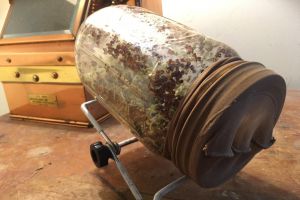 We kickstart our list with sprouts.
We kickstart our list with sprouts.
From crunchy bean sprouts to nutritious broccoli sprouts, these tiny powerhouses are packed with vitamins and require minimal effort.
Soak the seeds overnight, rinse them twice daily, and watch them flourish within days.
Microgreens
Microgreens are baby greens packed with intense flavors and nutrients. Plant the arugula, kale, or radish seeds in a shallow mason jar filled with soil.
Related: Microgreens: The Most Nutritious Indoor Food Source
Harvest them when they reach a height of two inches, and savor their tender leaves in salads, on sandwiches, or as garnishes.
Spinach
Similar to lettuce, spinach can be grown in mason jars. Opt for varieties that are specifically suited for container gardening. Enjoy homegrown spinach in salads, smoothies, or sautés.
Kale
Kale, the superfood packed with vitamins and antioxidants, can also be grown in mason jars. Select compact or dwarf varieties to fit well in the jars. Snip off the mature leaves and let the younger ones grow for continuous harvesting.
Baby Bok Choy
This leafy green vegetable can thrive in a mason jar. Choose compact varieties and sow the seeds directly in the jar. Harvest the leaves when they’re young and tender, and add them to your stir-fries or soups.
Herbs
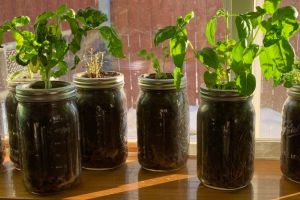 Fresh herbs can elevate any dish, and growing them in mason jars is convenient.
Fresh herbs can elevate any dish, and growing them in mason jars is convenient.
Basil, mint, parsley, and chives are just a few herbs that thrive in mason jars.
Place the jars near a sunny window and enjoy the taste of homegrown herbs.
You can also grow these medicinal herbs that serve as effective substitutes for nearly all the medications in your cabinet. These herbs have the potential to be vital in times of crisis when medical assistance is scarce, potentially saving lives.
Radishes
These crisp and spicy root vegetables are perfect for growing in mason jars. Plant radish seeds in a well-draining soil mix, and within a few weeks, you’ll have radishes ready for your salads and sandwiches.
Carrots
While traditionally associated with gardens, carrots can also thrive in mason jars. Choose shorter carrot varieties and plant them in a large mason jar filled with loose soil. Enjoy the satisfaction of pulling up homegrown carrots right from your kitchen counter.
Strawberries
Who said you need a garden for fresh strawberries? Choose a hanging mason jar or a large jar with drainage holes, and plant strawberry plants or runners.
Place the plant near a window, and savor the sweet, juicy fruits when they ripen. Indoor strawberry plants will produce at least a few berries a day.
Stevia
Growing stevia in mason jars is an excellent option for those looking for a natural sweetener. Plant stevia cuttings, and within a few weeks, you’ll have a steady supply of leaves you can dry and use as a sugar substitute.
Garlic Greens
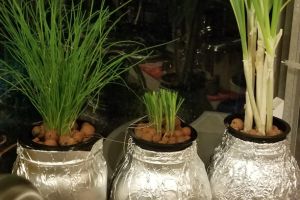 Instead of growing garlic bulbs, opt for the flavorful greens.
Instead of growing garlic bulbs, opt for the flavorful greens.
Plant individual garlic cloves in soil-filled jars, and in only a few weeks, you’ll have garlic greens with a milder taste, perfect for adding a touch of garlic-infused freshness to any dish.
Peppers
Plant pepper seeds in mason jars, ensuring proper drainage. Compact pepper varieties work best, and with regular watering and sunlight, you’ll soon have fresh peppers to add some zing to your culinary creations.
Cucumbers
Choose bush or compact cucumber varieties for mason jar cultivation. Provide support or a trellis to help the vines grow vertically.
Harvest the cucumbers when young and enjoy their refreshing crunch in salads. Cucumbers can also be pickled and preserved, making them the ideal prepper option.
Beans
Bush beans, such as green or French beans, can be grown in mason jars with stakes for support. Sow the seeds, and encourage them to climb the stakes as the plants grow. Harvest the tender beans for a homegrown treat.
Swiss Chard
Known for its vibrant colors and healthy nutrients, Swiss chard can be grown in mason jars. Plant the seeds in a large mason jar, and harvest them for salads or sautés as the leaves mature.
Tomatoes
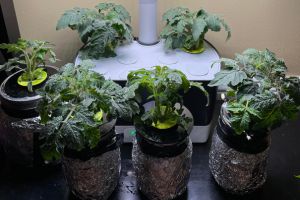 While larger tomato varieties may not be suitable for mason jars, compact types like cherry tomatoes thrive in these containers. Stake the plants as they grow; soon enough, you’ll have plump and flavorful tomatoes.
While larger tomato varieties may not be suitable for mason jars, compact types like cherry tomatoes thrive in these containers. Stake the plants as they grow; soon enough, you’ll have plump and flavorful tomatoes.
Related: What Happens If You Bury Fish Heads Under Your Tomato Crops
Beets
While beets generally need more space to grow to their full size, you can still enjoy their nutritious greens by growing them in mason jars. Sow the beet seeds, and once the leaves reach a few inches tall, snip them off for a tasty addition to salads.
Lemon Balm
Lemon balm, a fragrant herb with a refreshing citrus aroma, can thrive in mason jars. Plant lemon balm seeds or cuttings, and enjoy its soothing flavor in teas or as a garnish.
Wheatgrass
Packed with healthy nutrients, wheatgrass can be easily grown in mason jars. Soak wheatgrass seeds overnight, spread them on moist soil in a shallow mason jar, and cover them with a breathable cloth. Harvest the wheatgrass when it reaches about six inches and juice it for a healthy shot.
Salad Greens
Combine different lettuce varieties, spinach, and other leafy greens in a larger mason jar for a custom salad mix. Harvest the outer leaves as needed, and the plants will continue growing for an ongoing supply of fresh greens.
The possibilities for growing food in mason jars are vast, from vibrant herbs to nutrient-rich microgreens and vegetables. These miniature gardens bring a touch of green into your living space, offer the satisfaction of homegrown produce, and can be handy in a crisis.
With a little bit of effort and creativity, you can enjoy fresh and flavorful ingredients harvested right from your kitchen counter.
So, grab some mason jars, seeds, and soil, and embark on your delicious and space-saving journey of growing food at home, no matter where that may be.
Have you grown anything in a mason jar? I would love to hear about your experience. Share your story, knowledge, and ideas in the comments, and stay safe.
You may also like:
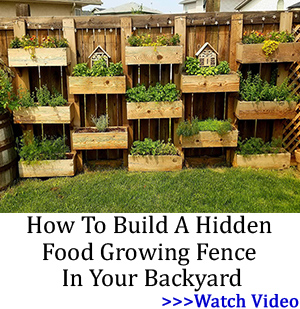 Why You Should Get A Drone For When SHTF
Why You Should Get A Drone For When SHTF
25 Crops You Can Grow In Buckets All Year Round (Video)
Do You Know Your Rights Under Martial Law?
How to Keep Moisture and Pests Away from Your Food Stockpile

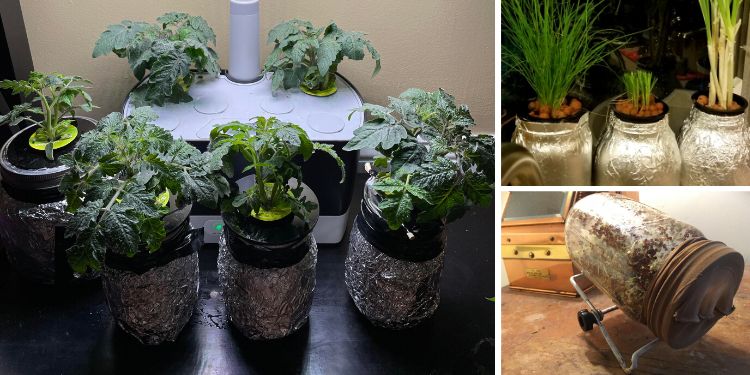













Excellent article. perfect for winter growing on my sunporch.
Good remedial review, sometimes we get wrapped up in daily life.
Vertical gardening is another method to grow food in small areas.
Have raised beds since the ground consists of rocks and clay.
There is some chatter on the internet about States like MI, gov did not want buying seeds for gardens. We are seeing food supply chains fresh, seeds being controlled by tyranny today.
Back in the day we had vegetable home gardens and no one thought any different. When elitists control food in any form, they have a powerful tactic to control.
Just started planting a Summer garden for salad.
UPDATE: On April 24, 2020, MI Governor Whitmer reversed the ban.
Not sure if this blog did a seed saving article. Some prepper sites gloss over quickly on this important subject. As some Heirloom seeds are at times hard to find.
There are short articles on one part of seed saving method for beginners to learn.
Have not found yet one article that does the whole enchilada of all types of plant’s seeds to save. Most focus on one part of seed saving.
Is there a book or online course that deep dives into this fascinating part of gardening?
Hi Larry, Have you checked out the SEED SAVERS EXCHANGE online?
I think it will have everything and more that you are looming for.
Not yet, do they have a complete course on seed saving? Thanks!
Have you seen the movie SEED The untold story. Pretty informative about seeds. Worth watching.
Here is what I found about seeds here:
How To Harvest These Seeds For SHTF
8 Plants That You Need To Know How To Harvest Seeds From
How to Properly Harvest Seeds and Get a Sustainable Food Source Year Round
How to Harvest Your Own Seeds from Garden Plants
Thanks for the info!
Seed Savers Exchange has at least two books on saving seeds. Very in-depth. Plus, they sell heirloom seeds. I have used and supported them for around 7 years now. Great organization.
Seems like a waste of mason jars, I have so many pots and other containers that I would rather use than to use my canning jars for gardening.
I hear ya! Pots and other containers can be better suited to growing plants.
For those who prefer a minimalist lifestyle however, having fewer items that contain multiple uses each, Mason Jars can fit the bill for this purpose, with a few tweeks.
Yes agree, even the terracotta clay pots have gone up in price, the USA made ones.
The 4″ pots over a year ago were 0.99 cents, now about $1.50+ USD. The system is squeezing us DIY citizens from all sides on the food chain and diy equipment.
I’m glad bought a few clay pots when they were cheaply priced.
In the past have depended on garden/hardware stores for seeds. Less Heirloom more GMO-hybrid seeds are being sold more in the big box stores. A few Mom and Pop stores still carry the traditional seeds, so far.
Yes, but also a good way to recycle bad jars.
Since Mason Jars do not have drainage holes in the bottoms of them, be aware that overwatering may be an issue.
You will have to mitigate drainage factors such as turning it upside down or tipped to allow the buildup of fluids to drip out, or use the jar as a vessel to put a plastic pot with drainage holes inside it.
Some sterile potting mediums like vermiculite or pearlite can be used instead of potting soil, and they hold moisture, but drain quickly too, unlike potting mix. They are packed loose and can fall out when the jar is tipped, so you will need to fix them in place with your fingers first to hold them down.
You will just need to fertilize the plants with synthetic liquid fertilizer everytime you water (at 1/4th the strength according to the directions by Miracle Grow).
Why would anyone use Miracle Grow? Unless they have changed the formula, that is chemical poison. I use fish emulsion on everything from my garden, to raised garden, to house plants. They all seem to love it. I even had to hunt to find a type of potting soil that didn’t contain Miracle Grow. Our True Value store orders it for me now.
Do you have aquariums and fish as pets. It is the best source of home made fertilizer. I used to keep a few of them around and when I cleaned the tanks I saved the siphoned waste water in two liter bottles to use with my house plants. I always had the best indoor garden that way.
I still use Miracle grow. But on the wife’s flowers.
I use organic tomato fertilizer and Alaska fish emulsion on foods.
Just a comment, instead of using perlite or other unnatural fillers in our potting soils, I have used rice hulls. They are usually discarded from rice producers but are available. And they are very economical.
We use the south side of the house year-long. (45 miles north of Tucson.) Last year was a rare one. It dropped to 22F twice and we lost some things. Most of the pea, garbanzo beans, radishes, and so on were frozen out. But all the grapes bloomed. Funny thing, most of the chilis (Chimayo) survived and came back from the roots. Very few bugs this year, but too many devil winds (4% humidity and winds up to 40 MPH in the canyon). Best news, the nopale (prickly pear) were gold with blooms. Same with the mesquite, which is a phenomenal food source. Tons of yucca and agave in bloom, too. boiled, yucca root tastes like chestnuts. They make good noodles (with some corn starch added) and a very good stuffing. niio
While that food list is quite small and does not have enough calories unless you convert your whole house to the task for growing, you need to explore other calorie dense foods to sustain yourself.
1 human eats about 1 pound of food a day, which necessitates the total caloric needs to be about 2,000/day.
Cold weather you need more.
Females need less unless pregnant or breast feeding.
You should have mentioned adding small rocks as drainage. I use aquarium gravel as it’s cheap and doesn’t come in massive quantities
Tomatoes and beans are a bad suggestion because they both need to be pollinated to produce fruit they also need support and room for root growth.